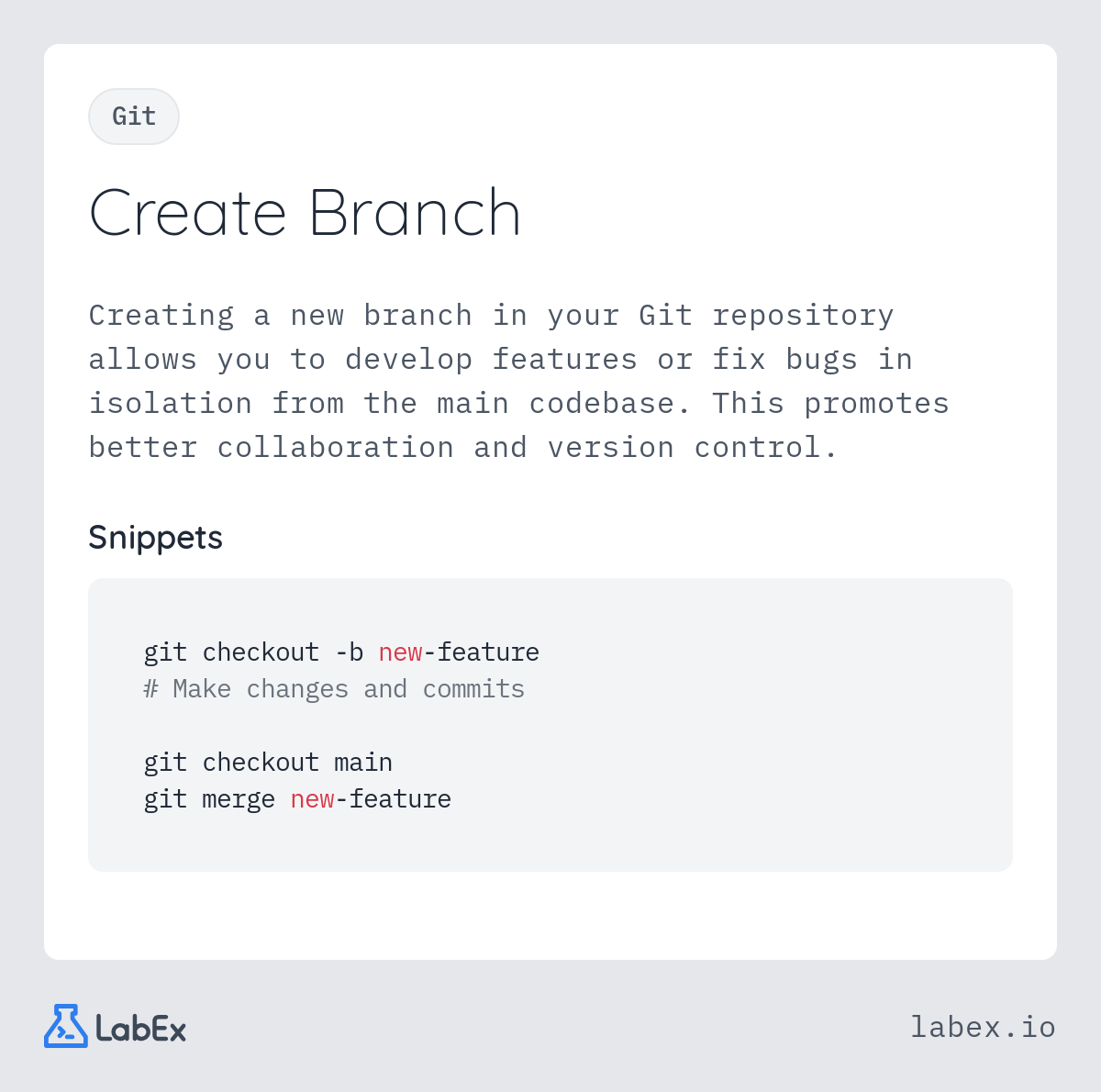
Create Branch
Creating a new branch in your Git repository allows you to develop features or fix bugs in isolation from the main codebase. This promotes better collaboration and version control.
Explore our curated collection of programming flashcards. Each card contains practical examples and code snippets to help you master programming concepts quickly.